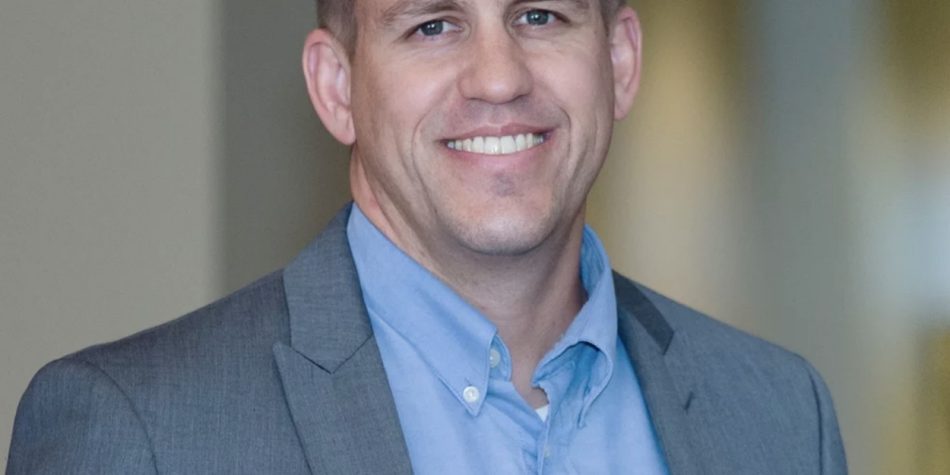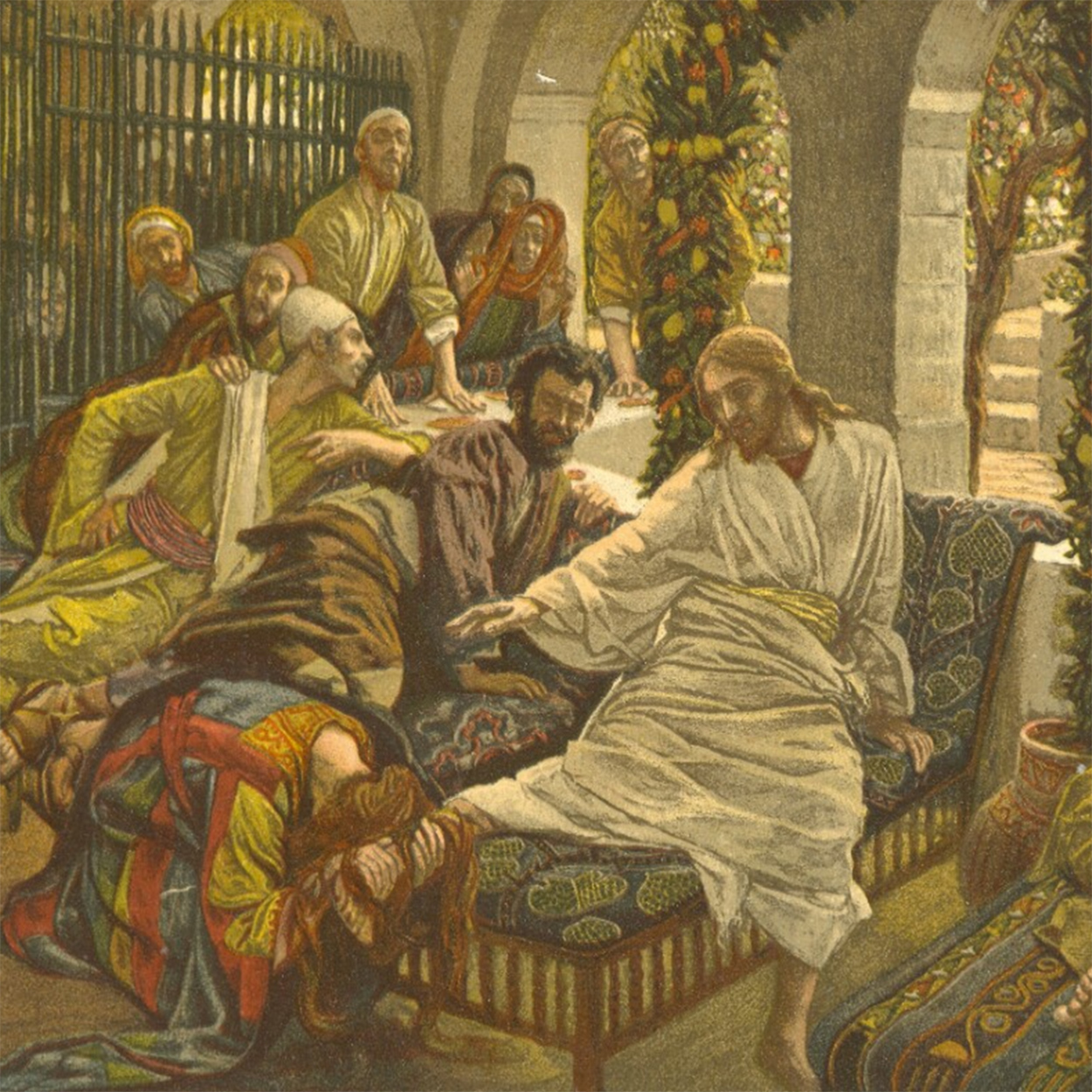Steven T. Collis is a research fellow at the Constitutional Law Center at Stanford Law School and an equity partner and chair of the nationwide religious institutions and First Amendment practice group at the Denver-based law firm, Holland & Hart.
His latest book, Deep Conviction, takes religious freedom out of the abstract and brings it to life using four important cases: A revolutionary-era Catholic priest who would not reveal what was said during confession. A 1950s atheist who would not sign an oath that he believed in God. A Klamath Indian man fighting for the right to practice a rite central to his faith. And a Christian baker that could not facilitate the celebration of a same-sex marriage.
While focused on religious freedom cases, the book is really about the shared human experience of pursuing our best visions of ourselves. I had the opportunity to sit down with Collis to discuss his book and the current state of religious freedom law. The conversation has been edited for clarity and brevity.
Christopher Cunningham: I really enjoyed the book. [Editor’s Note: He really did, and he can’t stop talking about it]. What inspired you to write it?
Steven Collis: I wanted to help people understand religious freedom better. I originally pitched a book that was a treatise for laypeople. But it evolved, with the help of Shadow Mountain, into a series of stories. If you can write stories in a compelling way, people will read and can learn about religious freedom.
I generally see religious freedom mischaracterized across the spectrum from both the right and the left. This is an area I’ve taught and spent a lot of time thinking about, and I really wanted people to understand it better.
When I speak about religious freedom here, and in the book, what I’m meaning is free exercise of religion. The other side is the establishment of religion (where we get the idea of separation of church and state—and that’s a crucial component of religious freedom), but I’m not dealing with those cases here.
CC: There are hundreds of stories in the religious freedom area. What drew you to these four in particular?
SC: I wanted to show how religious freedom has operated—and could operate—both over time and across religious beliefs. I wanted people to understand that people of very different religious beliefs are making the same argument. They’re all asking for the same treatment under the law. That’s true whether you’re an atheist or whether you’re a Christian baker.
I wanted people to understand that people of very different religious beliefs are making the same argument. They’re all asking for the same treatment under the law.
Those two groups tend to look at each other and think they’re so different, but in terms of how the law should treat them, they’re not different at all. That’s what I was going for. I wanted people to come to that understanding a little better than they have.
Some of that has been instigated by reporters asking me questions about these more modern cases. They’ve asked me questions like, “Is the argument this person making even legitimate?” And it made me realize people don’t understand these are the same arguments people have been making all the way back before the country was even founded. It’s important for people to understand that.
Finally, I wanted the book to be a page-turner, to read with the pace of a novel even though it’s all nonfiction. These stories allowed that in a way that perhaps others might not have.
CC: I was familiar with these four cases to varying degrees, but every time I had read about them before, it was from a legal or historical or journalistic lens—but now I was learning about the people. How does that add to the dialogue?
SC: I think it’s really important to understand that all of the people in these cases on both sides of the dispute are real human beings. Most of them have good intentions.
They are not these caricatures that often get painted in the media. And too often the caricatures that get painted depend solely on the viewpoint of the journalist.
I wanted to bring all of it to life, to help people understand how these disputes affect real people on the ground. I hope that adds something to the dialogue.
I also wanted to show people that we think of as so different: an atheist versus a Klamath Indian man versus a Christian cake baker. We think of them as being so different, but at the root, they’re really not that different at all. They’ve got these core beliefs that are absolutely precious to them, and they’re willing to go to the mat for them.
When we all have these beliefs that we’re willing to stand up for, how are we going to handle that as a society?
CC: Why risk turning off readers by including the very controversial Masterpiece case rather than use, for example, the less-in-the-spotlight Mary Stinemetz story you used in your introduction?
SC: The simple answer is I want the book to be relevant. That debate, the LGBT rights vs. religious freedom debate, is what’s driving everything right now.
Mary Stinemetz died not because people don’t value religious freedom, but because there’s a conflict right now between the sexual revolution and traditional religious mores.
So, I felt like it would be very difficult to address these issues without dealing with one of these more modern cases that are driving everything right now.
The intense culture war cases like abortion rights and LGBT rights are actually no different than the arguments in many other cases that don’t seem to be so intense.
And I suppose my feeling is that if someone feels so strongly about the topic that they would be turned off, they should read the book to better understand what was actually happening in the Masterpiece case. One of the things I’ve been pleased with is that professional reviewers have almost universally praised the fairness of my approach. Whatever view someone takes, I think this book will help them understand the issues better.
Finally, it’s important to realize that many of the stories in the book may not seem controversial today, but they were certainly controversial at the time. For the people living in the moment dealing with these cases, they can be very controversial. It’s only through the lens of time and historical perspective that we begin to realize that perhaps they shouldn’t have been.
CC: In legal terms, Masterpiece is very recent. We likely don’t yet understand all the ramifications. Was that limiting?
SC: I had intended the fourth story in the book to be a case out of Washington of a pharmacist being forced to dispense drugs that they had religious qualms with. [Stormans v. Wiesman]
But as I was finishing up, the court granted cert in [decided to review] the cake-maker case. So I thought, “This is live right now. I’m in Colorado. I can learn everything, or as much as possible, about these people.”
So I actually reached out to the publisher and we extended the deadline to wait for the Supreme Court to rule and then change the story.
I should tell you this: I was teaching my religious liberty law course at the University of Denver while the cake-maker case was going through the courts. That case has within it the entire history of religious freedom law all wrapped up into one. It’s really hard to find a better case to flesh out all these issues.
Everything we talked about as a class, we constantly found ourselves coming back to that case to apply those things to it. In fact, one of the questions I asked on the final exam was “Put yourself in the shoes of the justices and tell me how you would rule in Masterpiece.”
At the end of the day, it was almost the perfect vehicle to explore the modern conflict and how all the historical things come to play.
CC: I hadn’t put it together that you were in Denver while this case was happening. I’m curious, how did the local legal community respond since in a lot of ways the ruling was a repudiation of your local Civil Rights Commission?
SC: It’s unfortunate, but in my view, the response is what you’d expect. Even though the Supreme Court ruled 7-2 in favor of the baker, the folks on one side felt like the Supreme Court screwed up, and they dismissed it with “Next time the Civil Rights Commission won’t say anything negative.” They were trying to downplay it. I felt they were understating what the court did.
[Editor’s Note: The Supreme Court ruling in Masterpiece said that states had to treat religious reasons for withholding services no worse than non-religious reasons. Since some members of Colorado’s Civil Rights Commission had used derogatory language in reference to Jack Phillips’ faith, some interpreted the case narrowly to mean that Phillips would not have won if the derogatory language had not been used.]
And the folks on the other side thought it was a great result and championed it as the greatest win in history. They were overstating what the court did.
The reality is there were very few people who stepped back and looked at it in a balanced way. It’s unfortunate. I feel that the court tried to encourage a more positive dialogue about these issues, and I did not see that happen.
They understand religious freedom in a way that popular media does not.
But as I’ve gone and spoken about this book, the audiences I’ve spoken to have been able to frame this as “How can we protect both sides?” So there’s been some positive in it, but unfortunately, that’s not something that a lot of people have been pushing.
CC: One of the cases you profiled is Employment Division v. Smith. But unlike in the other cases you profiled, Al Smith lost his case. What led you to include that story anyway?
SC: The Smith case is the seminal moment in free exercise law in the United States, at least in the twentieth century. That is the fulcrum point on which everything bends. That case changed the law and is why it was necessary that everything happened the way it did in the Masterpiece Cakeshop case.
[Editor’s Note: The ruling in Employment Division v. Smith made it much more difficult to win a case based on a “freedom of religion” claim by changing the legal standard required to win a case on those grounds. The ruling is controversial enough that both the United States and 21 states have passed laws to reverse it.]
I felt that within any book dealing with the free exercise of religion in modern times, I couldn’t not talk about the Smith case.
But it was also a case I was not originally going to include. I was writing a different story, and as I progressed through I reached out to my editor and said, “Look, I’m writing about this other situation, but all I’m doing is talking about the Smith case,” because it was such a landmark opinion. I said, “I think it’s time to just tell Al’s story.”
CC: With Justice Gorsuch replacing Justice Scalia (who wrote the Smith decision), do you think there’s an appetite on the court to find a vehicle to overturn Smith?
SC: Four justices actually published an opinion where they hinted they might want to overturn Smith. Chief Justice Roberts didn’t join that, but that doesn’t mean he’s not willing to look at it. It’s not like they came out and said, “We’d overturn Smith.” They’d never be that explicit.
But there was a case that came up and the Supreme Court refused to hear it. Four of the justices essentially said, “We note that the petitioner did not ask us to revisit Smith, so we’re not going to do that here.”
But a lot of scholars in the free exercise law community saw that as a sign that they might actually be willing to look at Smith and potentially overturn it. So it’s possible.
If it got to the court, I don’t know how it would break down, how the justices would treat it. Chief Justice Roberts especially has grave concerns about how the court is perceived by the public and whether or not it will continue to have influence and legitimacy over time. An overruling of Smith could potentially do a lot of harm to that because it would be seen as anti-LGBT rights. It isn’t anti-LGBT rights—not by a long shot (the vast, vast, vast majority of religious freedom cases have nothing to do with LGBT rights)—but I think it’s possible that is how it would be portrayed by some.
It’s something that a lot of people are watching from both sides. It’ll be very interesting how the court handles it when the right case comes up.
CC: What do you think about Justices Kagan and Breyer who have broken with other liberals on the court in recent religious freedom cases? (e.g., Masterpiece v. Colorado Civil Rights Commission and Trinity Lutheran v. Comer)
SC: I think Justices Kagan and Breyer both understand and value religious freedom in a way that I think many in the media and popular culture do not today.
They both understand that this is a core freedom, and it needs to be protected. If you go back and look at the Supreme Court over the last twenty years, what you’ll see is, more often than not, Kagan and Breyer ruling for religious freedom and especially religious minorities.
When they rule in a way where the religious claimant might lose, it’s generally where the case has to do with human sexuality, such as abortion or LGBT rights. But even then, such as the Masterpiece Cakeshop case, they felt the religious claimant should win there.
So they understand religious freedom in a way that popular media does not, but they also recognize that there are other compelling interests out there, and sometimes religious freedom claims may need to step aside for other interests they hold in high regard.
CC: Steven, I really appreciate your time. Getting to pick your brain on these issues has been a ton of fun, and I hope our readers will enjoy your book as much as I have.
SC: Thank you.
















